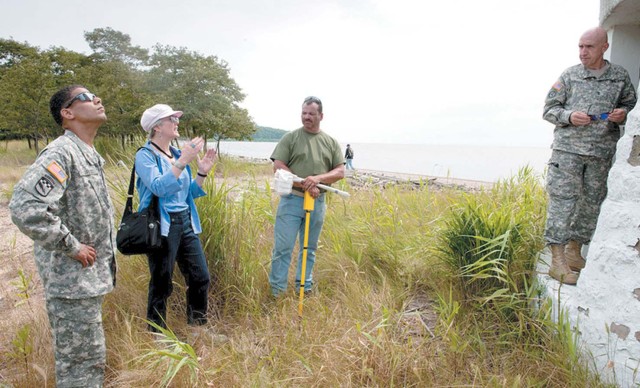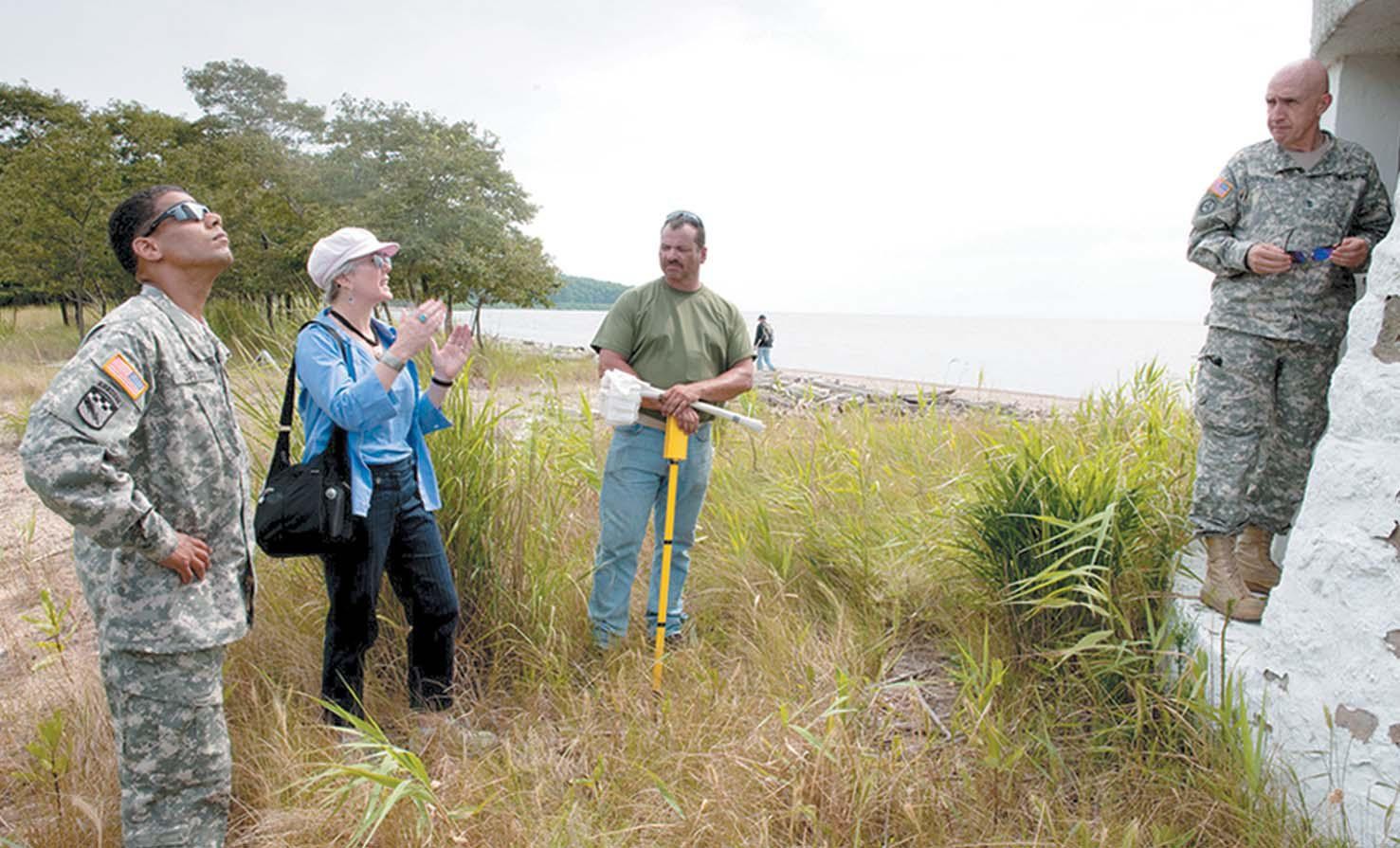
Col. Orlando W. Ortiz, APG Garrison and deputy installation comma... VIEW ORIGINAL
ABERDEEN PROVING GROUND, Md. -- Aberdeen Proving Ground commanders took in the historical significance of installation landmarks during a Directorate of Public Works jointly-led tour of the installation's historic sites.
Maj. Gen. Nick G. Justice, commander of APG and the U.S. Army Research, Development and Engineering Command, and Col. Orlando W. Ortiz, Garrison and deputy installation commander, recently participated in an extensive tour of APG's historic buildings in the Edgewood Area and at the Poole's Island Lighthouse.
Jeff Smart, RDECOM command historian, led the military historical tour focusing on World War I and World War II structures including shell filling, production, and pilot plants, chemical laboratories, the hospital complex, and troop barracks, all of which represent a distinct period of chemical warfare development in the former Edgewood Arsenal.
Terri Kaltenbacher, DPW cultural program specialist, led tours of the three APG structures that are listed on the National Register of Historic Places: the Quiet Lodge, the Gunpowder Meeting House, and the Poole's Island Lighthouse.
The Quiet Lodge, also called the Presbury House, was built circa 1740 and is the oldest standing structure on APG; it is associated with early Methodism in the country and it was extensively rehabilitated in 2007. The Pooles Island Lighthouse, built in 1825 by John Donahoo of Havre de Grace, is located on remote Pooles Island at the mouth of the Gunpowder and Bush Rivers, and is the oldest standing lighthouse remaining in Maryland. The Lighthouse was last restored in 1996.
According to Kaltenbacher, the command team visit was long anticipated due to keen interest in preserving APG's cultural resources, both military and those that existed prior to U.S. government acquisition in 1917.
"Because of the installation's strategic location on the Chesapeake Bay a wealth of archeological sites remain from Native Americans who once traversed and inhabited the area," Kaltenbacher said. "Early colonial settlements made an impact as well, resulting in several buildings and sites that are nationally significant on the installation."
Since 1917, the research, testing, and development that occurred on post has also changed the cultural landscape, and left legacies that need to be protected and preserved for the education of future generations, and to honor those who have served their country during the past century, Kaltenbacher added.
"Many installations nationwide face the ongoing challenges of addressing historic preservation concerns, including the rehabilitation and maintenance of historically significant structures. APG stands ready and committed to tackle these challenges while supporting the installation's primary mission of national defense."

Social Sharing